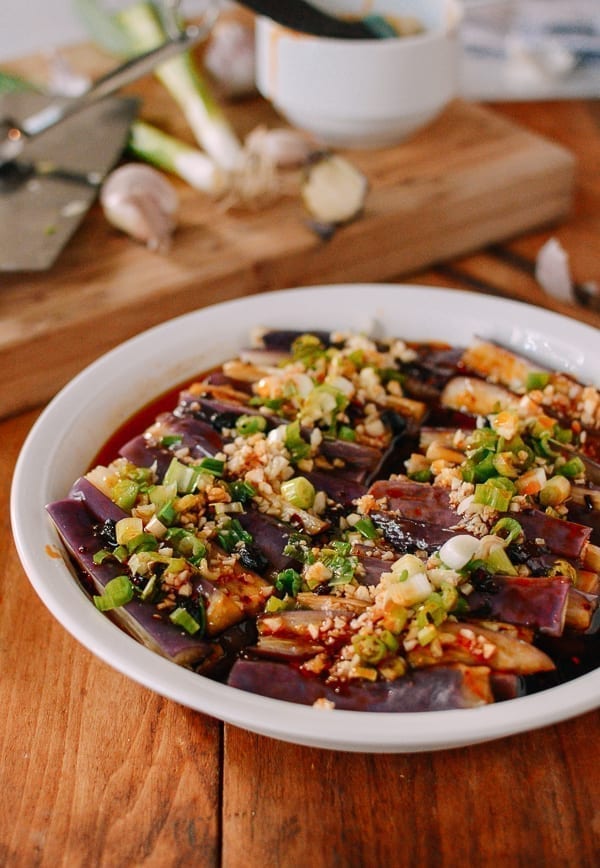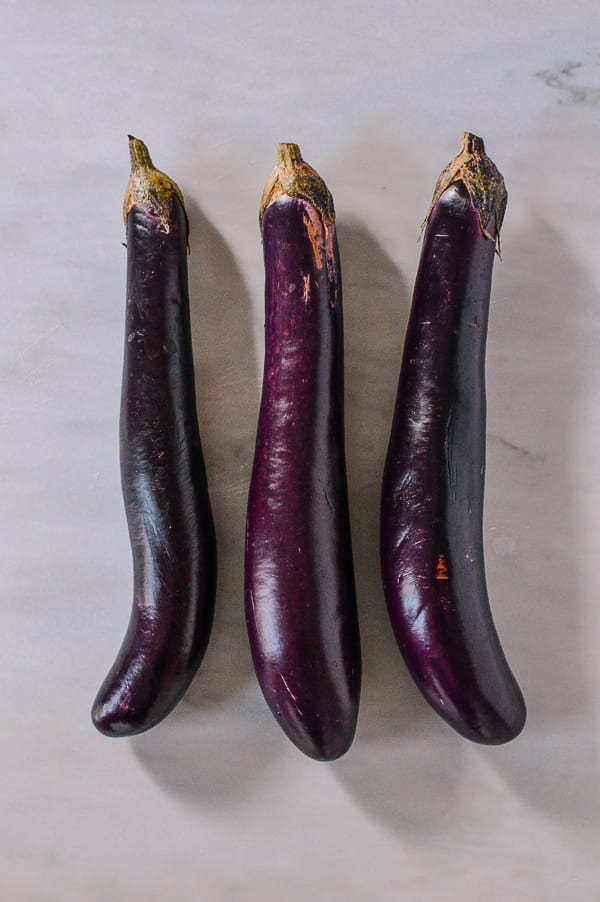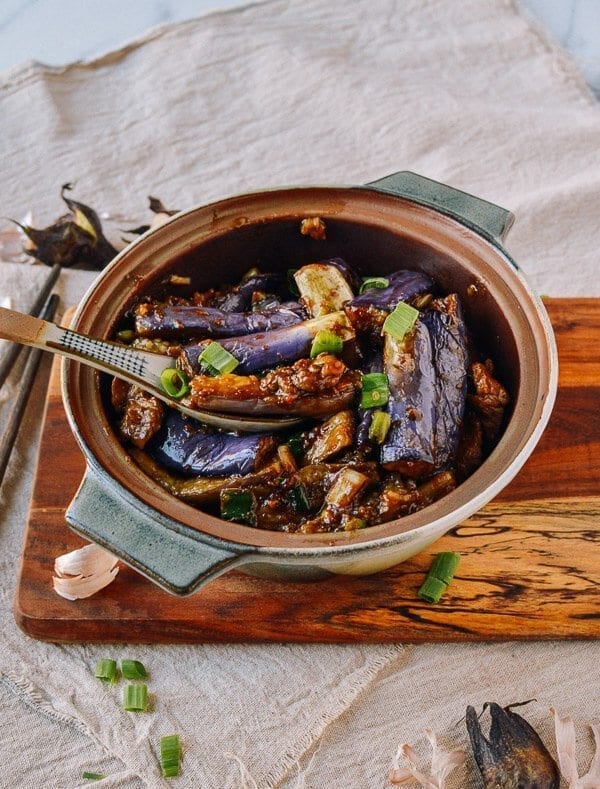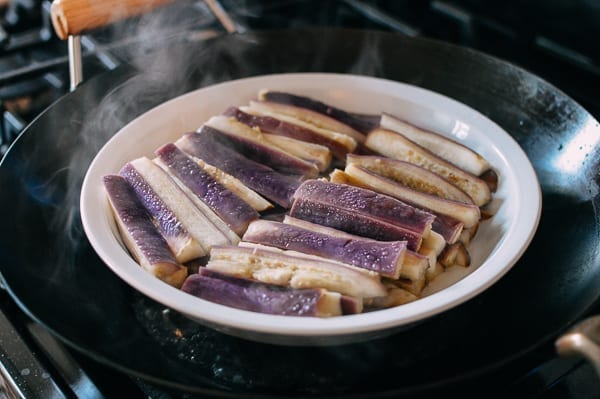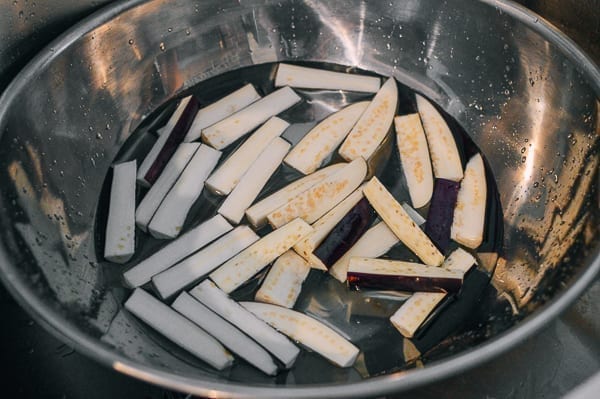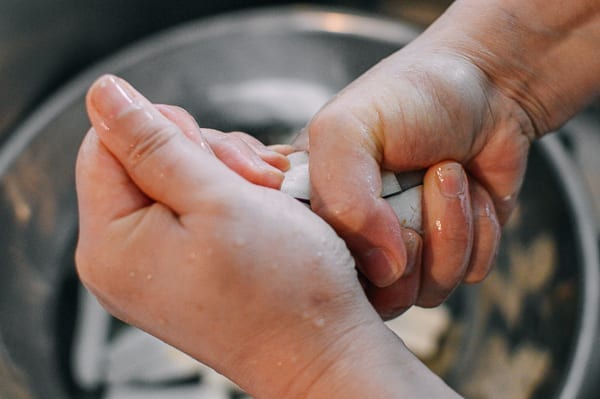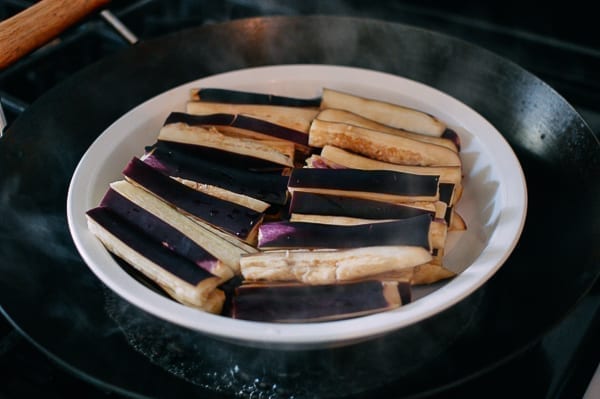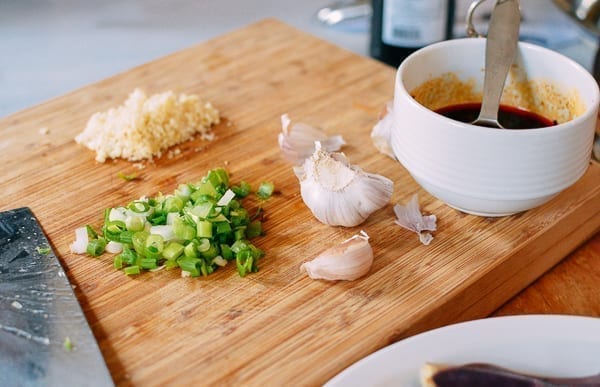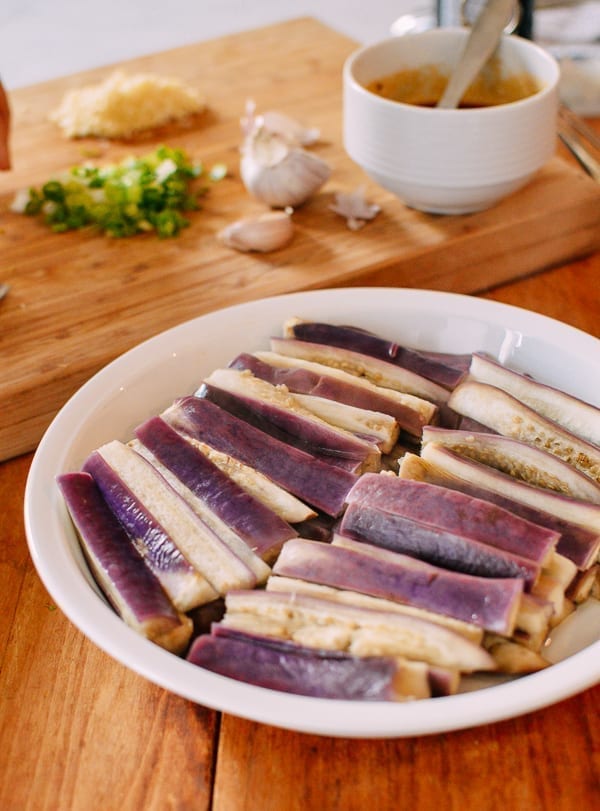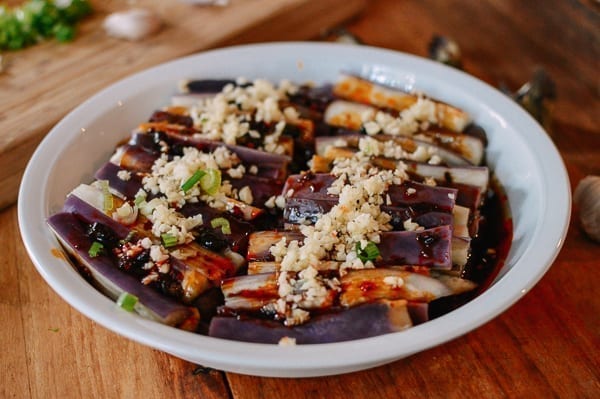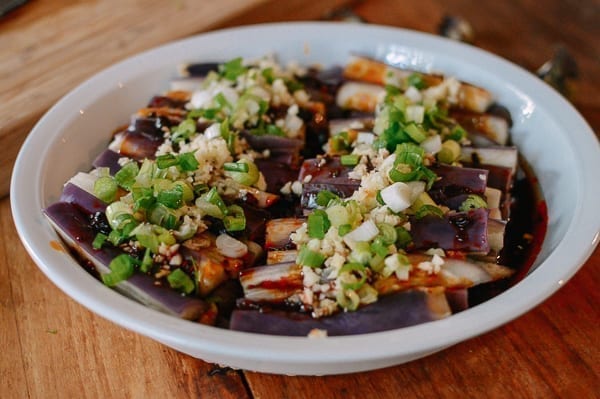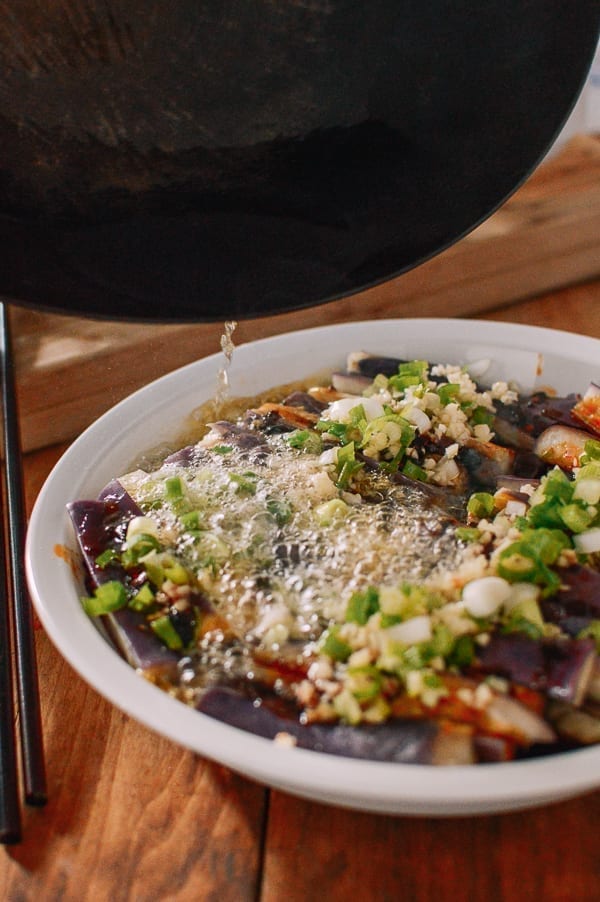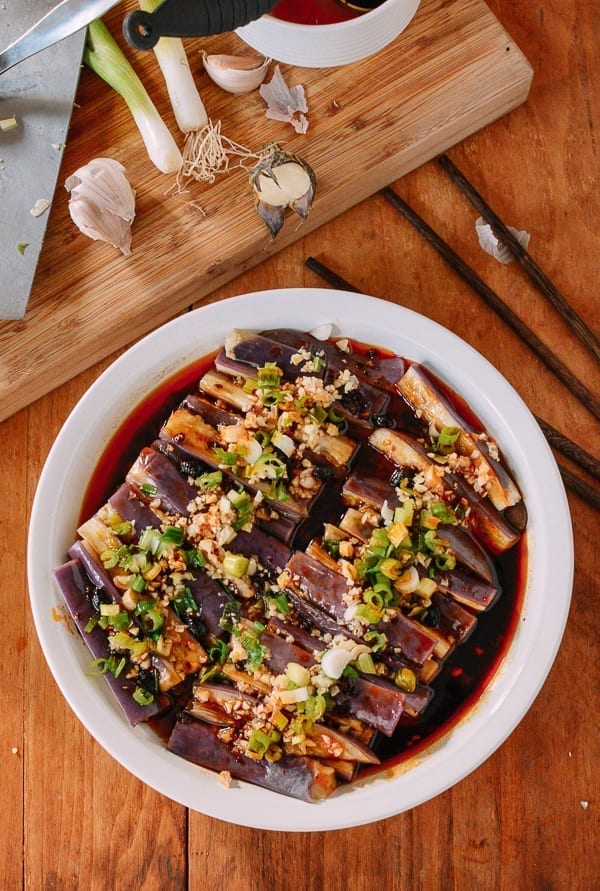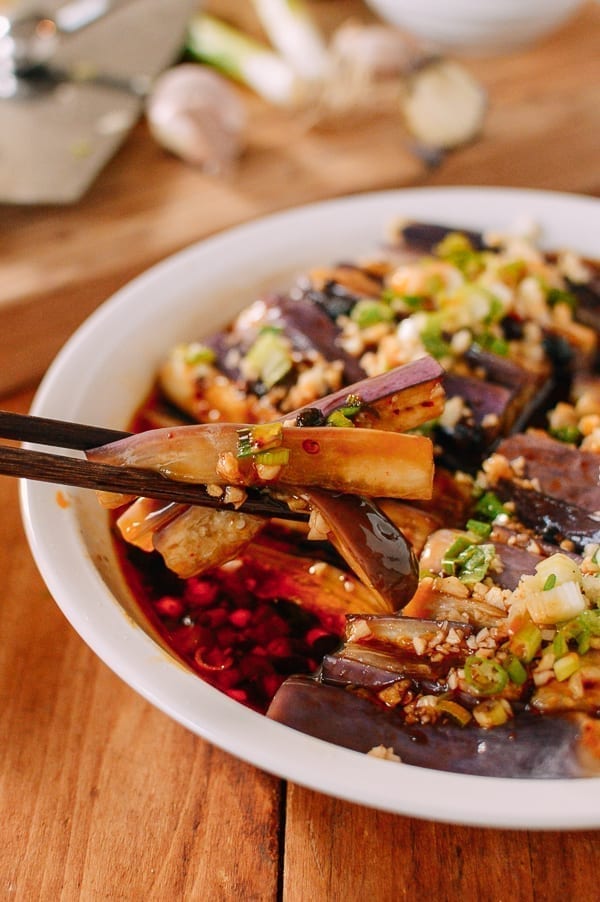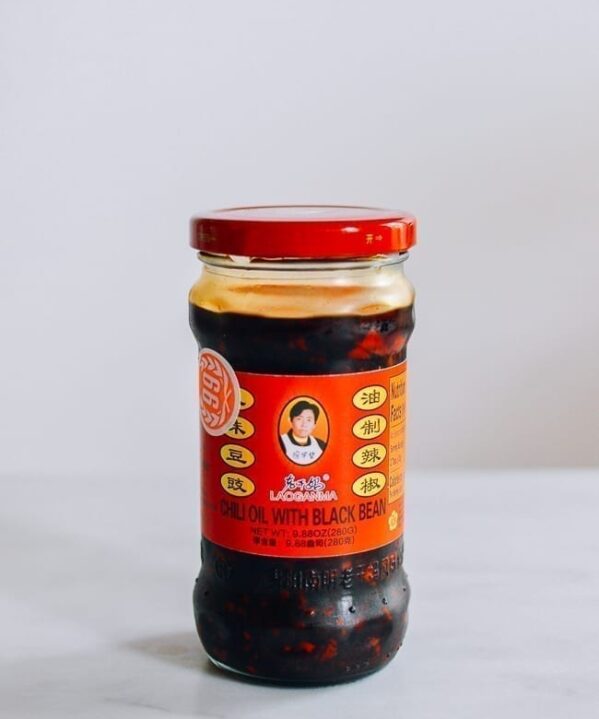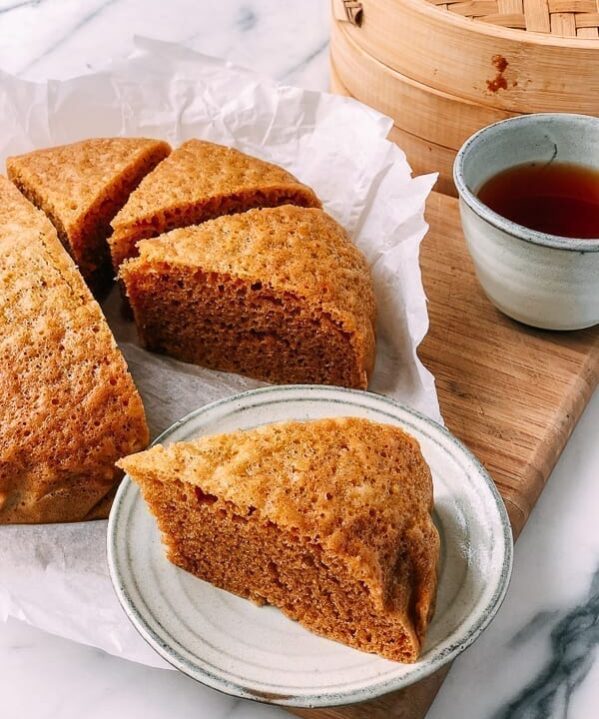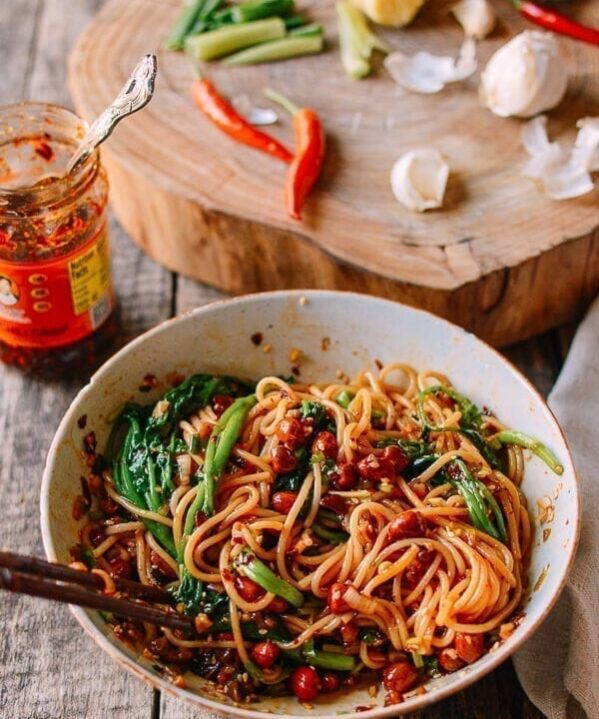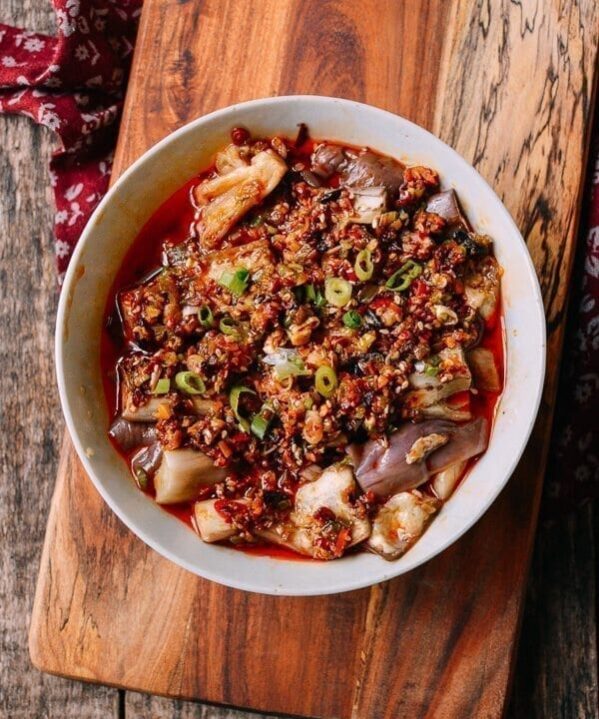We know how much readers love Lao Gan Ma (Godmother) sauces. But since we’ve already shown large dollops of it on noodles and rice, why not on a vegetable? Hence, this quick and easy Steamed Chinese Eggplant with Spicy Lao Gan Ma, so you can take down your favorite chili sauce with perhaps a little less guilt.
I just hope you can scrape up enough Lao Gan Ma from the bottom of the jar to make it. Plus, I have a tip to keep eggplant purple even after cooking, which I’m eager to share!
Growing & Cooking Eggplants
Before I start, I have a more personal note about growing eggplant in my own garden. For years, I tried growing long Chinese eggplants (or Japanese eggplants, depending on the variety) to no avail.
This year, I went so far as to send out my garden soil for testing and made necessary adjustments per the report. I’m happy to report that it was worth it!
My two eggplant plants have yielded my first 3 eggplants (ever) so far and there are 2 more on the way.
I used them in this steamed Chinese eggplant recipe. No biggie for you green thumbs out there, but I’m thrilled nonetheless. Can you tell? :)
Cooking eggplant can be equally frustrating, though. That beautiful and vibrant purple color can turn an ugly grey after cooking. Until now, frying eggplant was the only way I knew to retain an eggplant’s color, like in our Cantonese eggplant casserole:
So, how do you keep eggplant purple after cooking without frying it? The answer is salt and/or vinegar.
Once an eggplant is cut into pieces, it starts to oxidize when it meets the oxygen in the air. For this dish, I soaked the eggplant in vinegar water for 3 minutes. Eggplant is very absorbent, but since we are steaming them, it’s ok to soak them.
If you are stir-frying the eggplant, it’s best to lightly salt the eggplant pieces for about 10 minutes. You might lose a little bit of moisture, but it’s well worth it to preserve the beautiful purple color. Just know that these two applications need to take place immediately after you cut the eggplant.
Now that that’s out of the way, the rest of this dish is a walk in the park!
Steamed Chinese Eggplant Recipe Instructions
Prepare your steamer. If you’re not sure how to set up a steaming apparatus, check our our post on how to set up a steamer, even without special equipment. Turn the heat on low to pre-heat the water in the steamer.
Cut each eggplant crosswise into 3 equal sections, then cut each section into 8-10 bite sized strips.
Fill a large container with about 2 quarts of water and 1/4 cup white vinegar. Soak the eggplant in the vinegar water for 3 minutes.
Then remove the eggplant and squeeze as much liquid out as possible.
Arrange them on a heat-proof rimmed dish and carefully lower it into the steamer. Cover and turn the heat on high. Steam the eggplant for 8-10 minutes.
Now make the sauce by combining the Chinese black vinegar, light soy sauce, oyster sauce, sugar, sesame oil, and chili sauce.
Remove the eggplant from the steamer (no need to pour out the liquid in the dish).
Evenly pour the sauce over the eggplant. Top it with the minced garlic and scallions. Try to keep garlic and scallions close together in a couple tight lines to make the next step easier.
Heat 3 tablespoons oil in a small saucepan until it starts to smoke lightly, and then carefully pour it over the garlic and scallion. You’ll get a wonderful sizzle and delightful aroma.
Serve hot or cold! If serving as a cold appetizer, you can make this dish in advance.
Steamed Chinese Eggplant with Spicy Lao Gan Ma
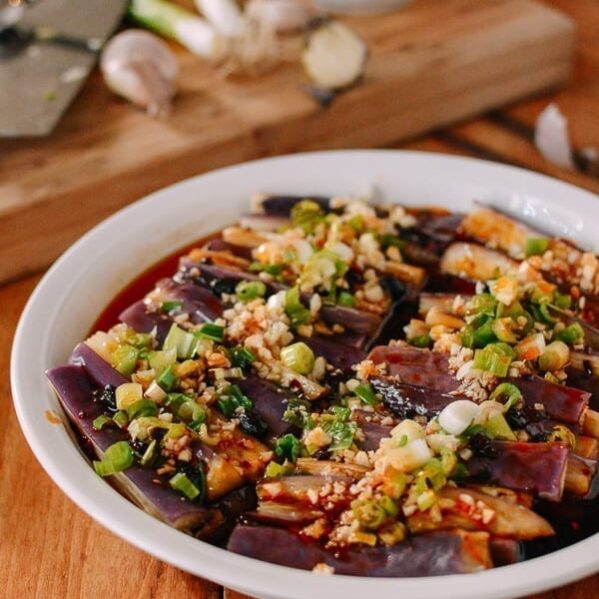
Ingredients
- 1 pound Japanese or Chinese eggplant (450g, about 3 eggplants)
- 1/4 cup white vinegar
- 1 teaspoon Chinese black vinegar
- 2 tablespoons light soy sauce
- 2 teaspoon oyster sauce
- 1/2 teaspoon sugar
- 1 teaspoon sesame oil
- 1-1 1/2 tablespoons Lao Gan Ma chili sauce (or any chili sauce or chili oil of your choice)
- 4 cloves garlic (minced)
- 1 scallion (minced)
- 3 tablespoons vegetable oil
Instructions
- Prepare your steamer. If you’re not sure how to set up a steaming apparatus, check our our post on how to set up a steamer, even without special equipment. Turn the heat on low to pre-heat the water in the steamer.
- Cut each eggplant crosswise into 3 equal sections, then cut each section into 8-10 bite-sized strips.
- Fill a large container with about 2 quarts of water and 1/4 cup white vinegar. Soak the eggplant in the vinegar water for 3 minutes. Then remove the eggplant and squeeze as much liquid out as possible. Arrange them on a heat-proof rimmed dish and carefully lower it into the steamer. Cover and turn the heat on high. Steam the eggplant for 8-10 minutes.
- Now make the sauce by combining the Chinese black vinegar, light soy sauce, oyster sauce, sugar, sesame oil, and chili sauce.
- Remove the eggplant from the steamer (no need to pour out the liquid in the dish), and evenly pour the sauce over the eggplant. Top it with the minced garlic and scallions. Try to keep garlic and scallions close together in a couple tight lines to make the next step easier.
- Heat 3 tablespoons oil in a small saucepan until it starts to smoke lightly, and then carefully pour it over the garlic and scallion. Serve hot or cold. If serving as a cold appetizer, you can make this dish in advance.
